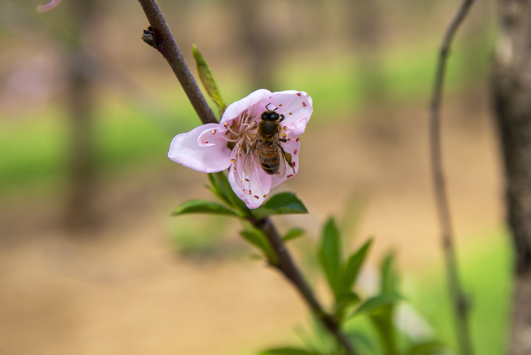Nosema ceranae specifically targets a bees digestive system and it has become a significant threat to bee colonies worldwide. It is not present in Western Australia (WA) but has been reported in all other Australian states and territories.
Nosema ceranae is a tiny parasite that lives inside the stomach of honey bees. It invades the cells of the bee’s gut where it multiplies and causes damage. When bees are infected, they can’t properly digest their food. This weakens bees and shortens their life span.
It was first detected in Asian honey bees (Apis cerana) in 1994. In 2005, it was detected in European honey bees (Apis melifera). Scientists are still studying how exactly Nosema ceranae affects European honey bees.
Nosema ceranae infection reduces the ability of honey bees to digest food. This impacts colony health, population and performance which can lead to colony collapse.
Nosema ceranae is invisible to the naked eye but there are colony symptoms to look for including:
- Declining population
- Poor honey production
- Reduced brood production
- Poor survival over winter
When Nosema ceranae infects a colony during summer months, the number of adult bees slowly declines which leads to reduced honey production. Severe infestations can cause colony collapse. Unlike other Nosema diseases, bees infested with Nosema ceranae rarely show obvious signs of digestive problems.
Nosema ceranae produces spores in the stomach of infected bees allowing the fungus to spread.
Robbing bees can ingest spores before taking them back to their colony. Water and food sources contaminated with the faeces of infested bees can also assist natural spread.
Accidental spread by humans occurs when combs from an infected colony are moved to a non-infected colony. Spores can also be transported on tools and beekeeping equipment.
Legal duty to report
Nosema ceranae is a declared pest in WA. It is a prohibited organism under section 12 of the Biosecurity and Agriculture Management Act 2007.
This means that any person who finds or suspects the presence of Nosema ceranae must report it to DPIRD.
Reporting is not just a legal obligation; it's crucial for safeguarding your hives and nearby colonies. Early detection gives us the best chance to eradicate pests and diseases. By following best practices and reporting promptly, we can protect Western Australia’s healthy bee populations and stop the spread of harmful pests and diseases.
Make a reportSearch Western Australian Organism List
The Western Australian Organism List (WAOL) provides the status of organisms which have been categorised under the Biosecurity and Agricultural Management Act 2007.
Western Australian Organism List
